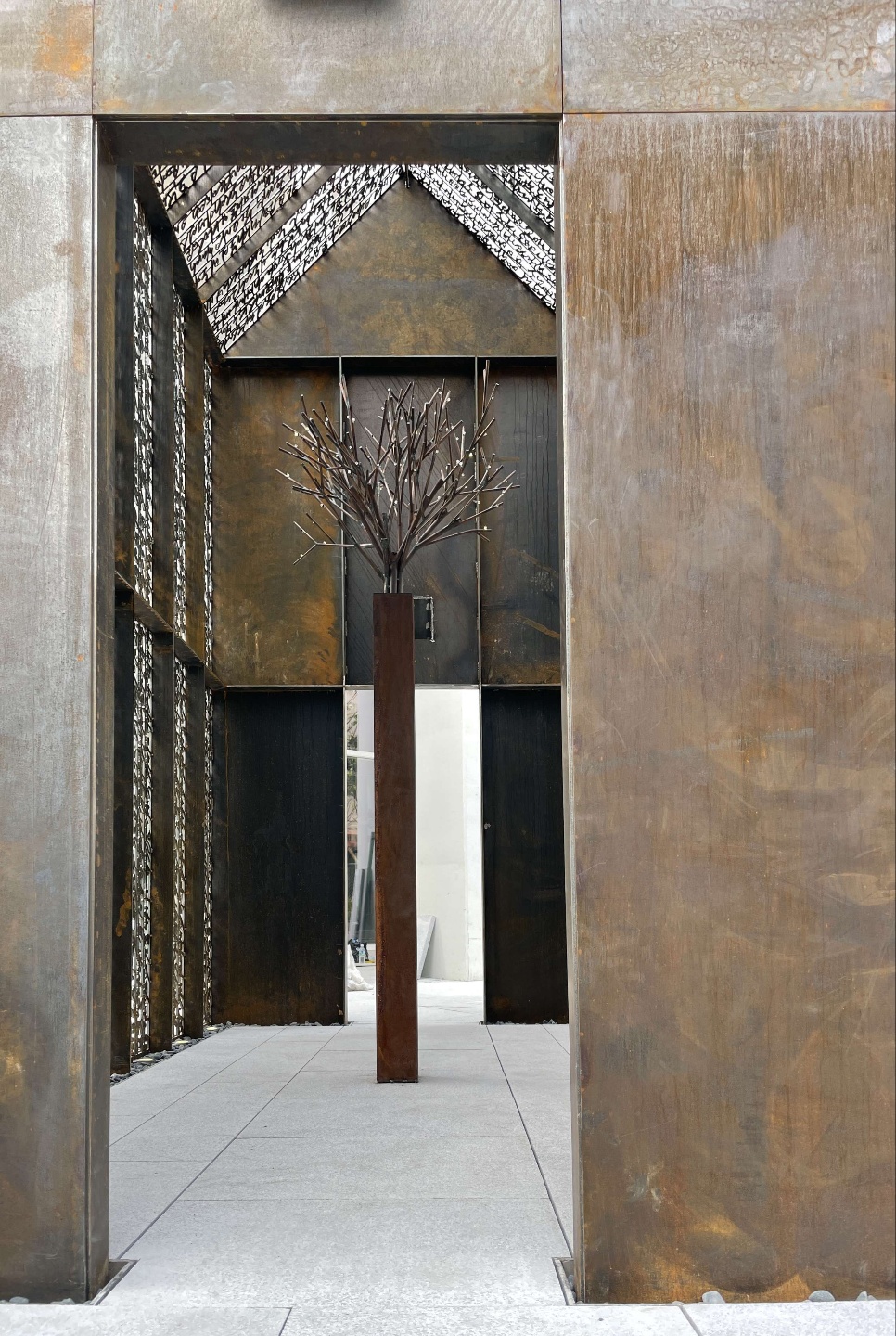| 완공년도 | 2022 |
| 위치 | 서울 숭인동 |
| Structural engineer | 은구조 |
| Lighting design | 뉴라이트 |
언어의 사당, 모재 某齋
이 시설은 숭인동에 새로 건립된 주상복합건물에 규정상 설치되어야 하는 조형설치물이며 화가 임옥상과 함께 협업으로 이루어졌다.
건축은 언어로 이루어진다. 건축주나 사용자의 요구를 글과 말로 받으면서 시작하는 건축설계는 그 특별한 장소에 새겨진 기억들과 만나면서 새로운 언어를 부른다. 그 언어를 건축으로 변환하는 일이 설계작업이며 그 건축을 일관되게 하는 원칙과 기준이 또한 그 언어에서 비롯된다.
언어는 우리가 말하는 게 아니라 우리에게 오는 것이라고 했으니, 절박하고 침묵함으로만 받을 수 있다. 신약성서의 요한복음은 이렇게 시작한다. “태초에 말씀이 계시니라… 이 말씀은 곧 하나님이시니라” 즉 언어는 그 자체로 진리라는 것이다.
이 설치물은 언어로 지어진 집이며 제전이고 사당이다. 승효상건축의 언어인 ‘빈자의 미학’을 임옥상의 조각으로 지어 모재(某齋)라 부른 이 집 한가운데 나무를 심어 이 집을 지키게 한다. 이 나무는 신시나무라 이름했다. 神市, 옛날 환웅이 비와 바람과 구름을 거느리고 땅에 내려와 세운 나라이며 이를 상징하는 나무여서 우리 공동체의 근본이 된다. 바라기로는 이곳을 지나는 시민이 이 제전을 수시로 드나들며 일상의 복을 기원하고 주어진 삶을 더욱 가다듬게 될 수 있기를…
Shrine of Language, Mojae
This small house in Sungin-dong is a collaborative installation artwork of the architect Seung H-Sang and the artist Lim Ok-Sang, that was mandatory by regulation for a new built multi-use complex.
Architecture is made with words. Architectural design, which begins by accepting the brief from the owner or user in writing and verbally, encounters the memories engraved in that special place and calls for a new language. Translating the language into architecture is the design work, and the principles and standards that make the architecture consistent also come from the language.
It has been said that words come to us rather than we speak out, therefore we can only receive it with eager and silence. The Gospel of John in the New Testament begins like this ‘In the beginning was the Word, … and the Word was God.’ In other words, Word itself is truth.
This installation is a house built in words, a temple, and a shrine. The ‘Beauty of Poverty’, the architectural language by Seung H-Sang, was formed with the sculptures of Lim Ok-Sang and called Mojae(某齋, a certain house). A tree was planted in the centre of this house to let it protect the house, and called Shinsi-namu (神市, God City), named after a country established by Hwanung, who came down to the earth with rain, wind, and clouds in the Korean myth of Dangun. The tree symbolizes the foundation of our community, hopefully passing by citizens would frequently visit this sacred place to pray for daily happiness and to refine their life…




